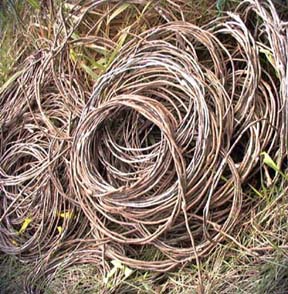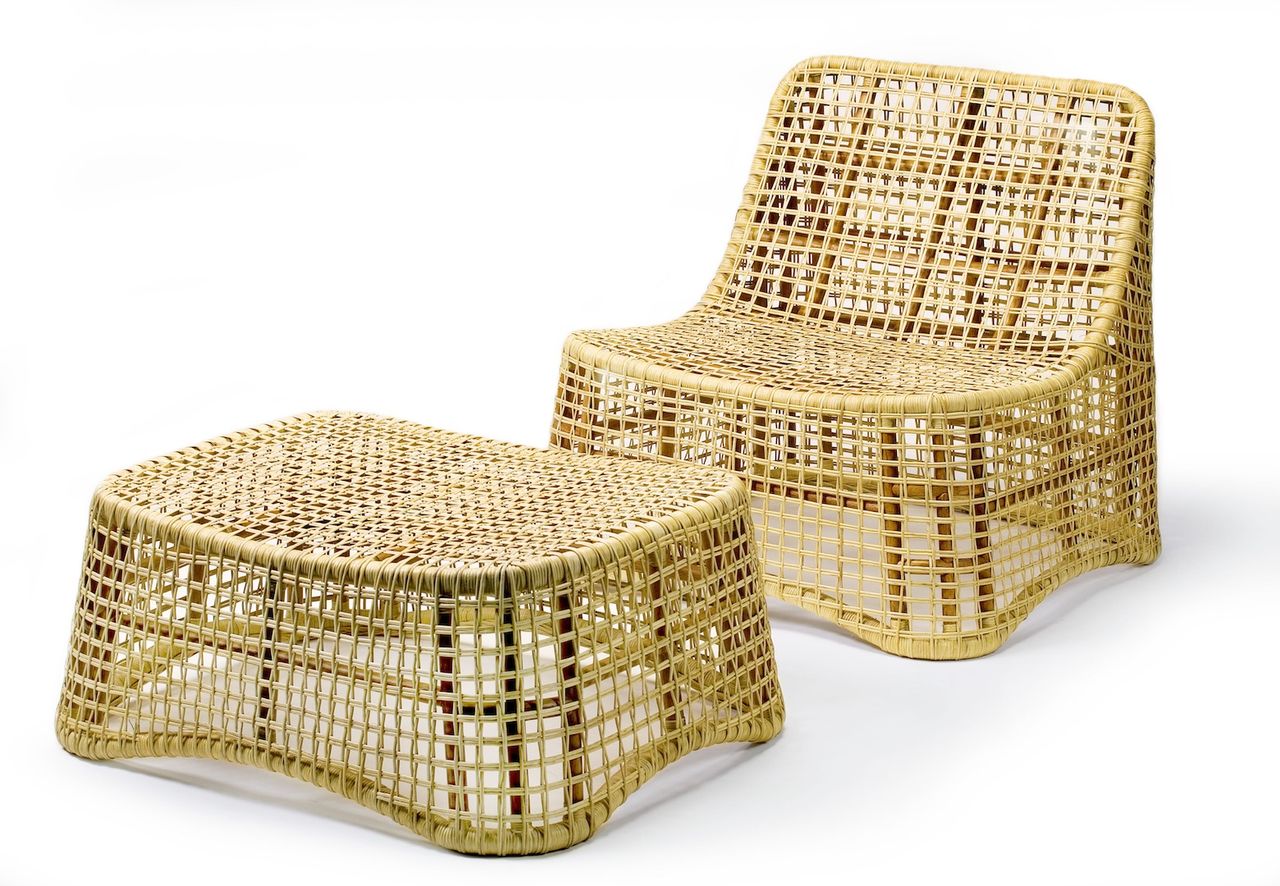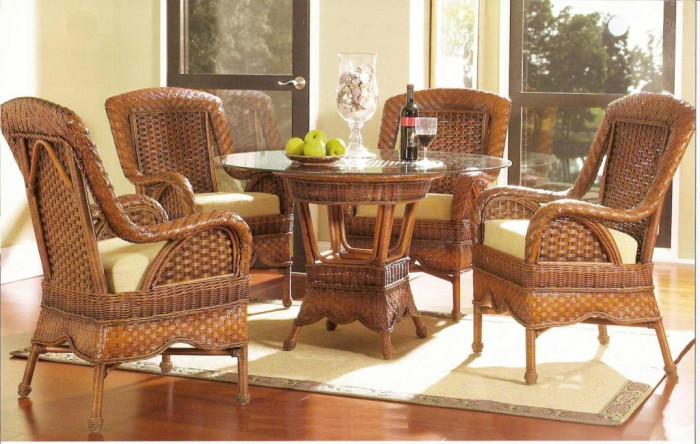Nibbi furniture

Nibbi Rope | Stabroek News Image
Nibbi is a hemi-epiphytic plant. This means that they attach themselves to trees but are rooted in the ground by aerial roots. The long, straight free-hanging roots are considered to be suitable for weaving. The Nibbi tree is said to be sustainable since the roots of Nibbi can be collected without killing the plant, which is considered to have great potential as a non-timber forest product. After harvesting, new roots take about five years to grow back to the soil. After collection, the “rope” is immersed in water to keep pliable until use. Once ready to use, the outer bark is peeled off and the root is slit into long strips. Roots are harvested on a domestic scale and are used for weaving baskets, tying thatches on roofs and other minor uses. On a commercial basis, Nibbi is one of the raw materials (along with Kufa, Clusia spp) necessary for the production of the attractive wicker-type Nibbi furniture, which supports a small but profitable furniture industry in Guyana.
Standard Specification
Nibbi furniture is a product, manufactured primarily by the Amerindian Community. This national standard is the Specification for indigenous furniture (bamboo, rattan, wicker and nibbi). It is a standard which can be used to fortify the consistent manufacture of these kinds of indigenous furniture.
Our indigenous people are popular for their fine arts and crafting abilities, which have allowed them to produce classy and unique pieces of furniture from plant materials in their surroundings.
Locally, and even in many other parts of the world, these pieces of furniture are in high demand and are well priced, especially when they are produced according to recognised standards.
The Specification for indigenous furniture is a CARICOM Standard, which was adopted by the Guyana National Bureau of Standards (GNBS). The standard was developed to benefit manufacturers by the harmonization of requirements for the manufacture of various types of furniture, suitable for both domestic and commercial use.
The standard covers material requirements, which are selected for rattan, wicker and nibbi furniture and these shall be characterized by lightness, flexibility, durability and smoothness with no hair-like strands hanging from them. Based on the standard, indigenous furniture shall be constructed with good workmanship components, which shall be of quality and uniformity; and the furniture shall remain stable in an upright position when empty.
In relation to the finish of indigenous furniture, the standard requires that all surfaces be sanded smooth and all exposed edges and corners eased to avoid injuries during use. Furniture shall be covered with materials such lacquer, wax, oil and polyester. This significantly enhances the appearance of the various pieces.
Similarly to other manufactured products, labelling of indigenous furniture is also necessary. Prominent labels shall be securely affixed to furniture and shall include information such as common name or types of furniture, manufacturer code or mark, country of origin and types of materials used in the manufacture. Lastly, as it relates to the specifications of the standard, requirements for sampling and performance testing are outlined. These are necessary requirements for the monitoring of the product.
Liana Cane Intl.

Liana Cane Furniture: http://www.designcaribbean.com/exhibitors/liana-cane-int
Liana Cane is more than just furniture. It’s a way of doing business that is holistic. A model that promotes and practices concepts of sustainability as they relate to people and the environment.
Liana is a generic name for woody rain forest vines that attach themselves to the towering tree canopies while their roots and multiple offshoots droop down to the forest floor. Similar in look and texture to the rattan and bamboo of the Far East, the kufa and nibbi vines are used for the structural elements of the furniture. Nibbi, a small vine that grows from the forest floor up the trunks of trees, is used for binding joints as well as for weaving that gives wicker-like appearance to some of the pieces. A fibre of the Ite palm is made by women into a twine called Tibisiri. This is used for the production of a cord-like material that is woven into fabric for the seats and backs of the chairs and tables, unique to Liana furniture.
The company’s website says that the Kufa and nibbi vines (two types of lianas) which are “similar in look and texture to the rattan and bamboo of the Far East”, are used for the structural elements of the furniture.
A twine called tibisiri is obtained from the fibre of the ite palm which is used for the production of a cord-like material that is woven into fabric for the seats and backs of the chairs and tables, a feature unique to Liana Cane furniture.
The producers of Liana Cane stress that the production of furniture and architectural pieces from forest vines helps to combat the destruction of our forest ecosystems, threatened by two pressures. The first being the increasingly desperate search of people in poor countries for survival; the second being the movement by big timber businesses into the remaining global forest resources of the South. Since the materials are harvested with a “light ecological footprint” on the forest, in comparison with the conventional timber industry, they generate many times more jobs per unit impact.
Article References
- https://www.kaieteurnewsonline.com/2018/09/16/standards-in-focus-making-indigenous-furniture-that-meets-the-standard/
- http://www.designcaribbean.com/exhibitors/liana-cane-int
- http://guyanachronicle.com/2010/09/23/liana-cane-amerindian-influenced-furniture-launched-at-courts
- http://www.gnbsgy.org/specifications-indigenous-furniture/
- https://www.stabroeknews.com/2012/features/05/27/nibbi/
Discover more from Things Guyana
Subscribe to get the latest posts sent to your email.







